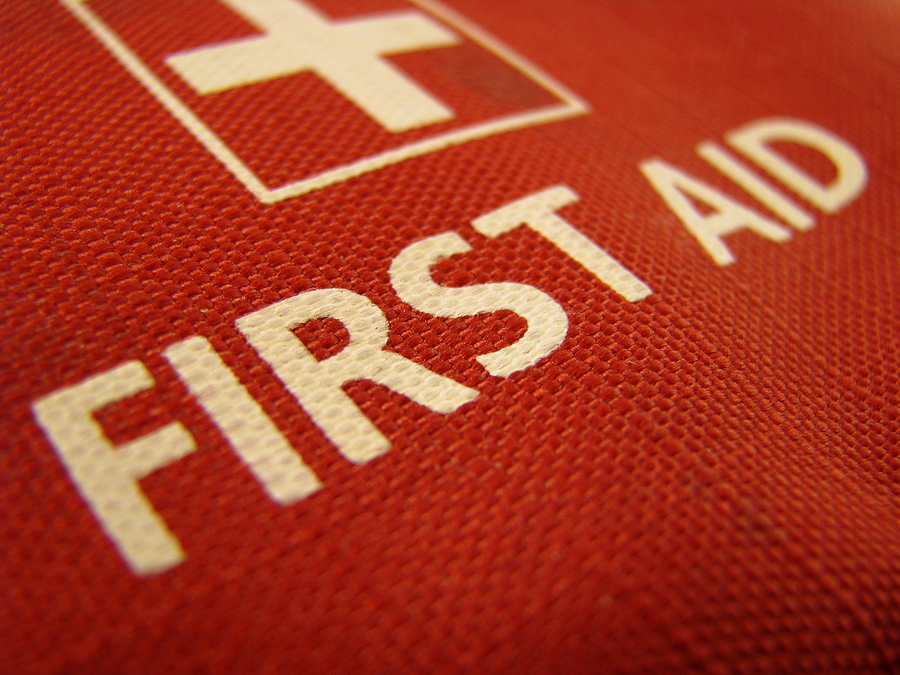 Many parents say their child lives to play soccer, run cross-country, or participate in cheerleading or football. No matter the sport, along with the joy of athletic competition comes the risk of sustaining an injury. Now that fall sports programs are in full swing, it’s a good time to ensure your child’s squad has appropriate first-aid supplies available at all practices and games. Here are 8 ways to whip your team’s first aid response kit into shape.
Many parents say their child lives to play soccer, run cross-country, or participate in cheerleading or football. No matter the sport, along with the joy of athletic competition comes the risk of sustaining an injury. Now that fall sports programs are in full swing, it’s a good time to ensure your child’s squad has appropriate first-aid supplies available at all practices and games. Here are 8 ways to whip your team’s first aid response kit into shape.
The first aid kit should contain an assortment of up-to-date supplies used to treat the kinds of injuries and illnesses most likely to occur. Dr. Paul Auerbach is a Professor in Emergency Medicine at Stanford University Medical Center and author of Medicine for the Outdoors. He describes on www.momsteam.com what a comprehensive first-aid kit for the sidelines might contain. He believes different types of first aid may be required for different sports, and the bag should be packed accordingly. For the bruises, sprains and abrasions that occur in contact sports, cold packs, elastic bandages, and adhesive bandages will be needed. A track coach will need products to sooth and protect blistered feet and pulled hamstring muscles. Each first aid kit should contain ample supplies to treat several players during one practice, game or event. The kit bag itself should be tough, to withstand years of handling and foul weather without compromising the effectiveness of the contents.
The team’s trainer or coach should designate an area where the first aid kit will be kept. The bag should be readily identifiable, so no time is wasted looking for it when mishaps occur. Each member of the coaching staff and each player should know where to find the first aid kit when an injury occurs. It helps if the bag is a different color from other bags on the sidelines. If your team colors are green and white, use a red bag for the first aid kit. It will always stand out. Or use red duct tape to create a large iconic ‘red cross’ medic symbol on the sides of the team’s existing bag.
When playing away from the home field, the coach should update a cell phone with local emergency numbers. Hopefully, coaches and trainers already have local emergency numbers programmed into their phones. When playing in a less familiar area, add local emergency contact information. Relying on a call to 911 might delay response. Having numbers for a local EMT service and the closest hospital emergency room readily available will save time and stress if a serious injury occurs. Know the address of the sports field or facility, as well.
Coaches should be trained by a medical professional to administer basic first-aid. A first-aid kit containing correct and adequate supplies is only half of the equation. The coach or another assigned individual must be knowledgeable about basic first aid treatment such as how to close a wound or splint a sprain. Knowing cardio-pulmonary resuscitation (CPR) and how to use an automated external defibrillator (AED), will allow a coach or team parent to respond to a life-threatening event like sudden cardiac arrest (SDA).
Have a tooth preserving kit available. Statistics tell us that up to 75% of players do not wear mouth guards regularly. This has led to a high occurrence of knocked out teeth on the playing field. Many teams do not have a plan for saving the tooth when the knock out occurs. Placing the tooth back in the socket is the preferred treatment, but sometimes complications such as concussion prevent that from happening. Having a tooth preserving system around can prevent the permanent loss of a tooth.
Injury specific first aid products can be packaged together in resealable plastic bags and labeled. A bag labeled ‘wound care’ might contain iodine wipes to disinfect gashes, antibiotic ointment to prevent infection and butterfly bandages to close openings in the skin. Preparing these smaller first aid packages in advance will streamline the first-aid process when seconds count. Inventory and restock the kit as needed before every game and practice.
Chemical icepacks are an integral part of a sports first aid kit but should not be placed directly on skin. Ankle twists and sprains occur frequently and applying ice to reduce swelling is the first step in treatment. When ice is not available, chemical gel packs can be useful. They are easy to store and convenient to use. However, if the gel pack is applied directly to the skin, its below-freezing temperature can cause tissue damage. Momsteam.com suggests placing a wet towel between the gel pack and skin. Whenever possible, the use of ice is preferable. It’s safer and less costly to use. Many teams keep a cooler filled with ice and resealable plastic bags on hand. The use of chemical ice packs can be reserved for times when no ice is available.
Tell your coach if your child carries an Epi-pen and instruct him or her how to use it. An Epi-pen is available by prescription only. It is used to counteract a severe anaphylactic response to an allergen. Bee stings and peanuts are two common allergens that may cause severe responses in sensitive individuals. The coach may wish to keep the Epi-Pen in the first aid kit during games and practices.
For a comprehensive list of items found in a sports first aid kit visit http://www.momsteam.com/health-safety/general-safety/first-aid/what-should-a-sports-first-aid-kit-contain.
Cramer is one source for first aid kits designed especially for sports. They have kits for teams and for home use. https://www.cramersportsmed.com/products/first-aid-kits
 Kayvon Haghighi, DDS, MD, FACS is licensed to practice both medicine and dentistry in the state of New Jersey. Dr. Haghighi’s unique combination of surgical training and experience in facial reconstruction enables him to analyze your condition from multiple points of view.
Kayvon Haghighi, DDS, MD, FACS is licensed to practice both medicine and dentistry in the state of New Jersey. Dr. Haghighi’s unique combination of surgical training and experience in facial reconstruction enables him to analyze your condition from multiple points of view.
